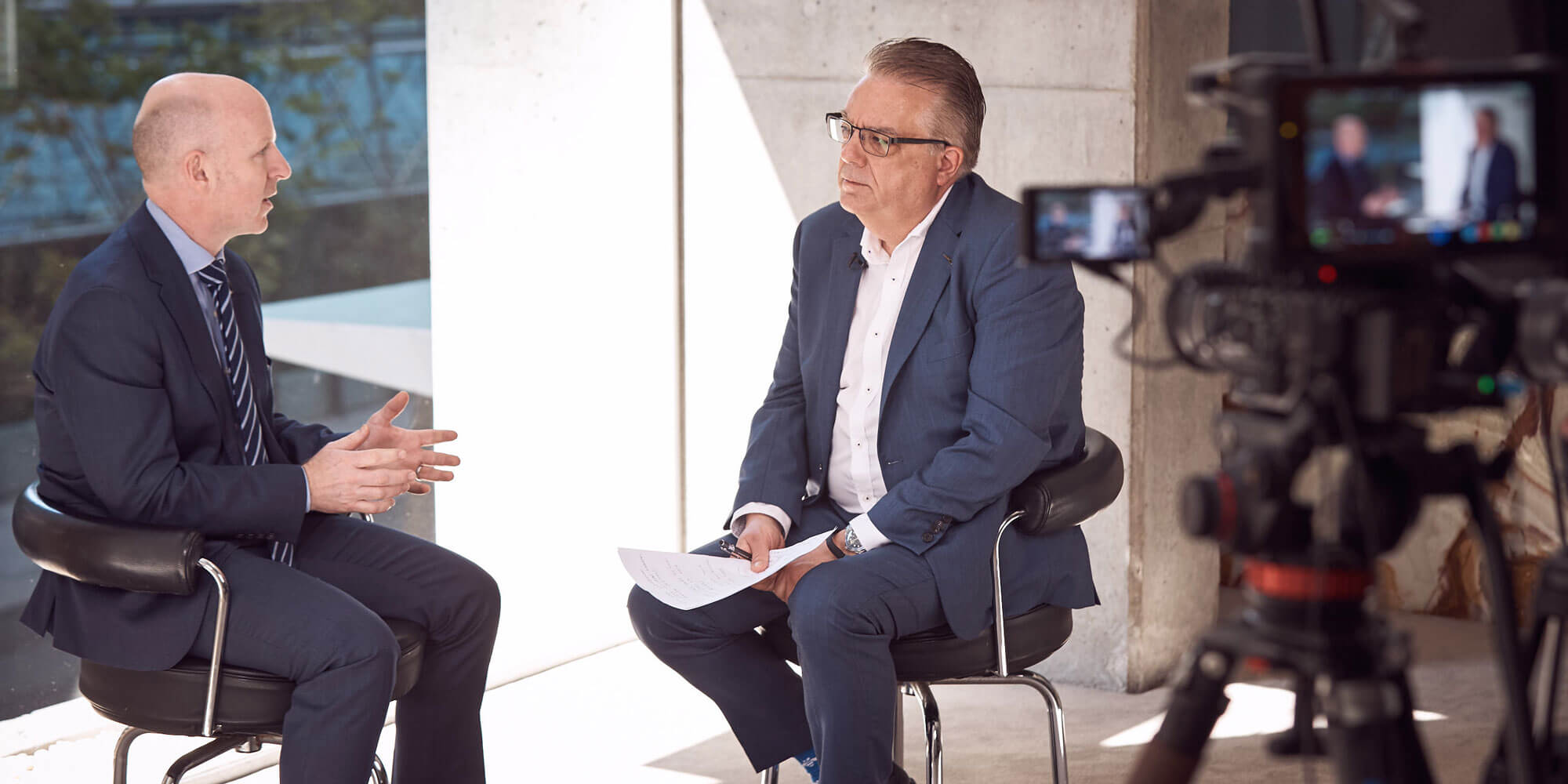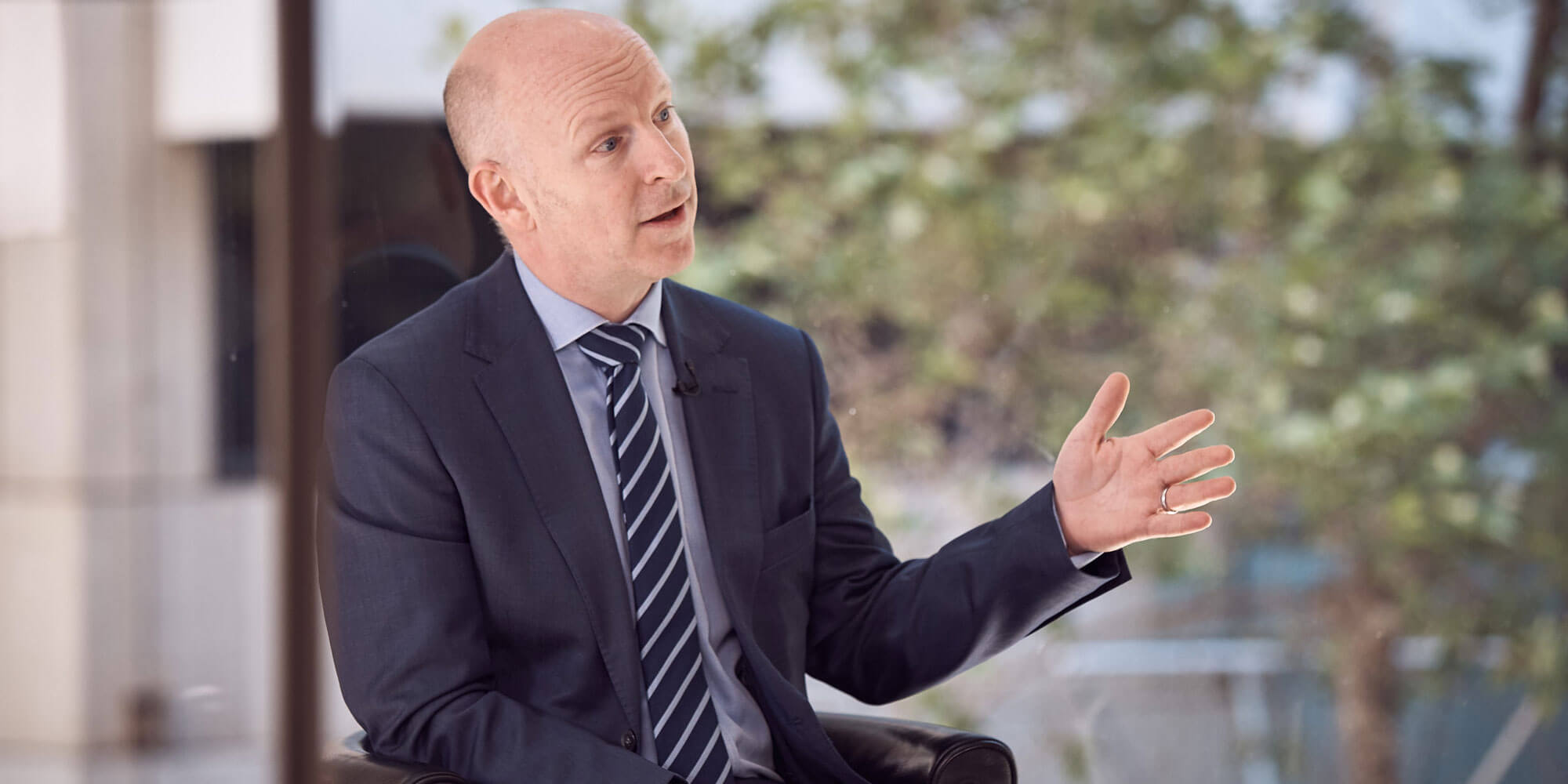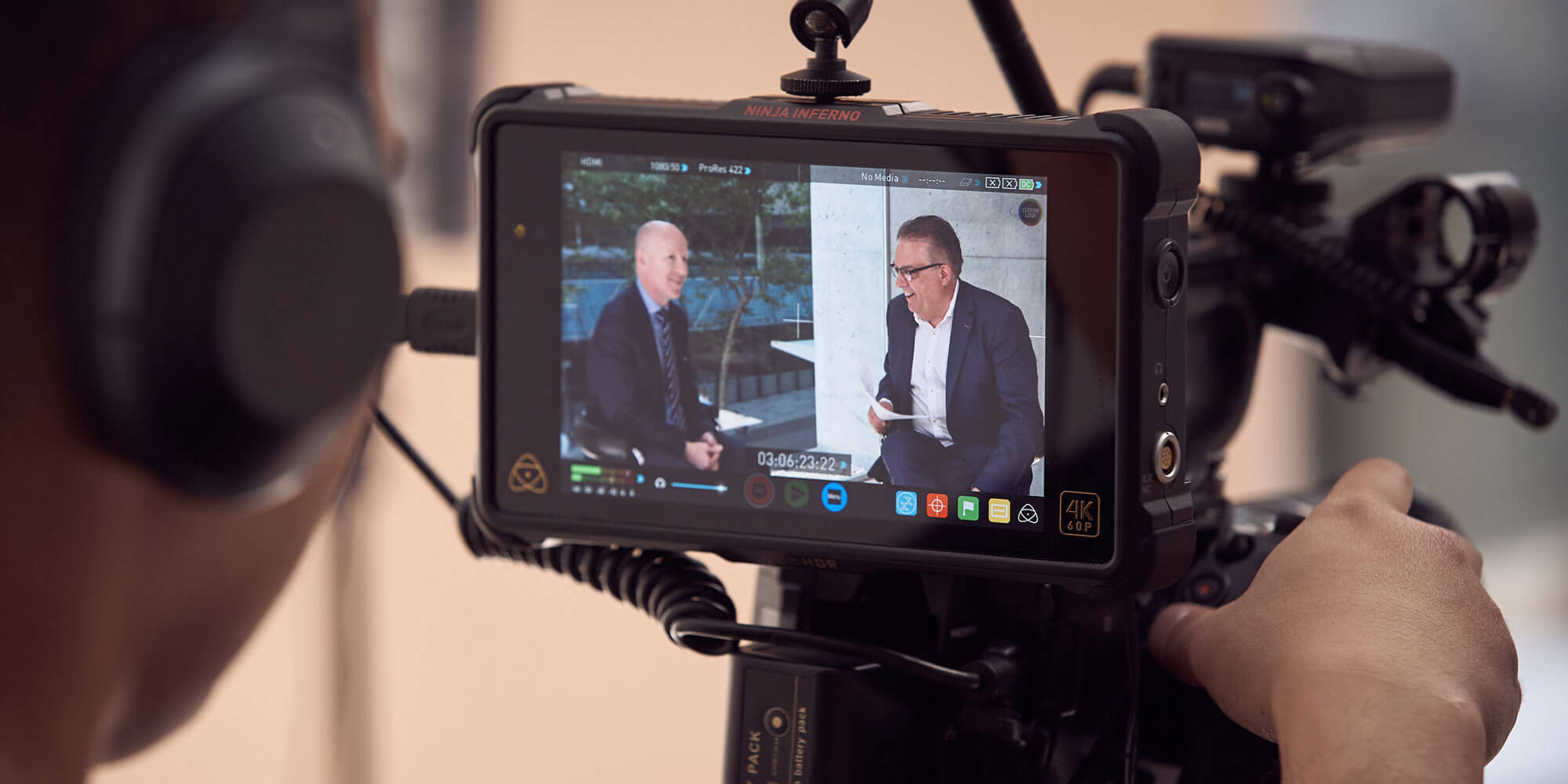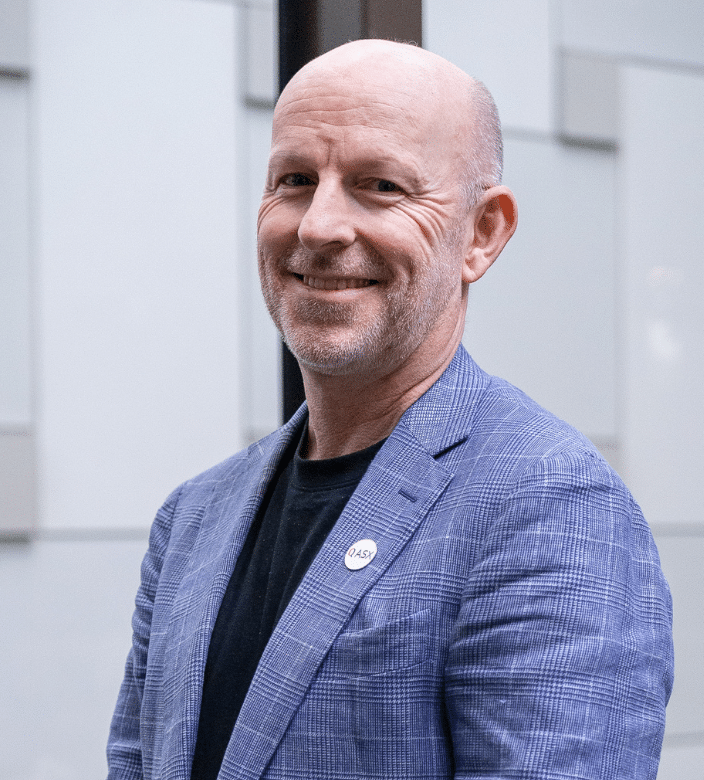At ADAPT’s CIO Edge Director of Strategic Research Matt Boon asked Chief Information Officer Dan Chesterman his key learnings from ASX’s ongoing digital transformation journey. Chesterman shared the importance of common goals and how to measure success along the way.
Matt Boon:
Could you give us a little bit more input and understanding just what the ASX is made up of today?
Dan Chesterman:
Sure, I think a lot of people know the ASX from the cash equity market or CHESS statements because all of us see that on the news every day. And the cash equity market is a really important part of the ASX, but it’s by no means all of it. We are also a trading venue for derivatives and futures and options. We offer OTC clearing for derivatives, we have an information services business, which provides market data and other feeds to our participants. And then we have an increasingly important technical services business. And we run a data centre out of Artarmon, which is the Australian Liquidity Centre. And a private, a VPN network out to different points of presence around the globe so that we can actually offer access into the Australian market, from Hong Kong or Singapore, Chicago, or London. So it’s quite a diverse business with many different services.
Matt Boon:
Can you tell me a little bit more about how the technology services side of the business works? To maybe give people a bit more clarity around that.
Dan Chesterman:
Sure, so we created the Australian Liquidity Centre about eight years ago, and that we built a data centre out in Artarmon. We could have, at that stage, built it just for the O6, or just for co-location customers. But we made quite a conscious decision to make an open piece of infrastructure that could actually allow anyone into the Australian Liquidity Centre. And it’s grown quite substantially over the last eight years to now have more than a hundred customers in it.
It started, obviously, with those customers that were very sensitive to latency or security, but it’s actually grown now to be anyone that can see value with connecting to that network of customers. So, we offer cross-connect through Axspace and data centre services within that facility to a diverse range of customers including market data providers, back-office technology providers, and obviously, the banks and brokers that want to connect to the ASX. What’s been interesting to see evolve is if you like the value of that community and the network and the ecosystem that’s created around having all of those participants close together in one centre.
Matt Boon:
When you think about this concept of the community, has it really given by the number of customers you’ve got, I’m assuming that there is really quite a hunger out there in the marketplace for like-minded in many ways organisations to actually get that opportunity to interact and work together in that community environment.
Dan Chesterman:
I think you’re right. I think it’s natural that organisations first think about technology investments in the context of their four walls. But maybe by nature of the role that we’ve always played, that’s not been the case with the exchange.
All of our systems exist to provide value back to the community that connects to them.”
What we’ve been interested to see at the Australian Liquidity Centre is actually that sometimes our customers are connecting to each other within our facility. And that’s a really great example of the value that can be created out of a community rather than just a hub-and-spoke model.
Matt Boon:
That’s right, you were talking earlier on, about a session we had with the Chief Innovation Officer of NASA a week ago. And I think he was making that point as well, that where we can bring people together into those environments, we can actually achieve an awful lot more ultimately and that people are quite hungry for that.

Dan Chesterman:
I think that’s right, and I think when you actually think about almost any value flow that has any meaningful value in it, it involves multiple participants. And then it’s kind of interesting that we’ve actually then optimised straight-through processing oftentimes within the context of one organisation. And I think one of the great promises of smart contracts and distributed ledger technology, which is one of the other areas we’re investigating is in this idea that we can actually start to model multiparty workflows and provide true multiparty straight-through processing.
Any significant transaction, maybe it’s a corporate action or a rights issue in our market, it always involves multiple parties. It’s one thing to be able to optimise that step within a process, within your four walls, it’s quite another to be able to optimise the efficiency of that process across multiple parties. To be able to do that, you need a couple of preconditions, you need, obviously, a degree of data harmonisation and data standards so that the data that transfers from one organisation to another is consistent. And I think APIs and data standards have been able to provide that. But smart contracts go one step further in that the data I pass from organisation A to B is not just passed over and kept sound, but the way it’s interpreted is actually predetermined, and that’s what I mean by multiparty workflows. And I think it’s one of the significant promises of distributed ledger technology.
Matt Boon:
What would be the key projects or initiative you’re undertaking, which may well, in fact, be a work in progress, but I’m just interested in what you might be working on right now.
Dan Chesterman:
So, I suppose from when I joined the ASX, one thing that was really, really clear and it’s obvious when you think about it is that the criticality of the services we operate means we need to be always up, always on. So the kind of underpinning strategy for us has been built around building stronger foundations, which means all the activities that allow us to feel confident that our services are being well-run, well-ordered, well-fed, and are safe and secure. And so there are a number of initiatives that we’re doing there, which really start from the infrastructure up around creating safe services. But also include the introduction of service management capabilities and some of that predictive analysis on where we potentially could have incidents in the future.
The second part of our strategy is around improving and really standardising the way that we make technology decisions so that we’re not making them in the context of a single project, but we’re thinking about things holistically. So improving and strengthening the ability for us as an organisation to be technology, to make good technology decisions over time.
Matt Boon:
As you look towards outcomes, some include to have multiple projects in play, I’m assuming you kind of have this common goal which everybody is kind of working towards. I’m just wondering if that’s explicit or not.
Dan Chesterman:
It is, there are certain very, very clear, what we call obvious e-goals, vision, strategy, and extrusion goals that are actually set under organisation level. And so that helps the organisation be very aligned about what we’re actually trying to achieve, I suppose, as it relates to technology decisions.
What I’ve been really interested in is technology does evolve over time, so you never know all of the answers when you start out. The idea of trying to paint a perfect target state five years out doesn’t reflect the fact that things will change. It’s all actually about building a good discipline for having decision making that is able to take into account multiple different perspectives and opinions from the teams, whether it be infrastructure teams, application development teams, the architectural team, the testing team, the business who’s going to be using the technology, all those different perspectives need to be understood, and then a decision made in a transparent but rapid way that allows the organisation to move forward with confidence that we know where we’re heading. That doesn’t mean we can’t course-correct when we get new information.
But it’s really about having a target state which has been defined in terms of what are the key capabilities or strategies we’re trying to enable before we start down a path.”
I did perhaps just want to touch on two initiatives which I think specifically talk to that multiparty workflow and community. One is obviously the CHESS replacement project. And CHESS is the system that we use to clear equity trades here in Australia, no matter which market they’re on. We are looking to introduce a new system in April 2021, which is based on a distributed ledger technology and the promise of that is that we can really see the value for the market by us providing an infrastructure that allows those multiparty workflows to be modelled and executed. And importantly, what we’re trying to create is an infrastructure that can allow for that development to be made by other parties as well. So, I’m hopeful that we’ll see some of our participants, direct participants create solutions which allow them to take advantage of that technology and real-time source their truth data within their own environment. I’m hopeful as well that we’ll see fintechs or other technology providers create multiparty applications that can actually also take advantage of that infrastructure but create value back for the market. And a second initiative, which is in a different context is ASX DataSphere, which just recently launched. And that’s a big data analytics platform where we’ll load up some of the ASX’s datasets, but we’ll also allow for third-party providers to add data and see their data co-mingled with ours.
At a dataset, data science workbench where they can actually create analytics products that combine both our data and their data. So I think these are both examples of us continuing to do what the ASX has always been in the market to do, which is to sit at the centre of financial markets and provide value back to our participants so that they can provide better services to their customers.

Matt Boon:
How are you measuring success along the way? I know you talked about the ultimate goal that you’re heading towards, but as you think about those stages along the way so that you can demonstrate that you’re, if you like, getting wins, you’re succeeding, and you’re along that journey, on that path, what are some of the measures of success, Dan?
Dan Chesterman:
So, one of the most the first and most important measure of success for me is that the ASX licence to operate is preserved.”
And we’ve been very pleased to see that as we’ve increased our appetite to execute more projects and more change, we’ve actually been at the same time decreasing the number of customers impacting incidents that we’ve been having. So a focus on quality and service uptime and service resilience is paramount. And the first and most important measure of success as it relates to actually the success of initiatives like ASX DataSphere or the CHESS replacement project, I think we’ll be measuring our success based on customers actually using the infrastructure. When you’re in the business of providing new technology that customers and participants can benefit from, the true measure of success is adoption.
Matt Boon:
And do you have an ideal goal, if you like, in terms of adoption from obviously, numbers and percentages?
Dan Chesterman:
The goal would be, my goal would be to make Australia the best capital market in the world. But I did look, the reality is it’s not a numbers game obviously, there would be milestones along the way, which would be pleasing. And what I’m pleased to see as well, we already got a customer development environment available, and many of the customers and back-office providers are actually in that customer development environment and they are developing some of their set solutions and using our technology in that development context. So I think adoption is paramount and really, it’s about seeing our customers and the participants in our market take advantage of the infrastructure we provide.
Matt Boon:
Okay, perfect. Obviously, when you’re undergoing such a large-scale initiative, which really spans across a lot of people, a lot of different parts of different organisations, how challenging has the people aspect been for you?
Dan Chesterman:
In lieu of legacy, you might call some of the systems we have heritage, and I say that kind of, that not necessarily tongue-in-cheek. Many of our really good systems are quite old, the CHESS system we’re replacing was initially implemented in 1994. So it’s 25 years old.
Matt Boon:
Plenty of mainframes lying around.
Dan Chesterman:
No, we don’t, actually. We do have Itanium servers with Odin BMS. There are some older technologies and that’s absolute, the reality is, though, it’s got admirable uptime, it works, and we have other older technologies as well that are in the process of being replaced. So good technology works overtime is one thing I would say. I’d also say we benefit greatly from having many people still in the organisation who have been part of the initial implementation of those initiatives. And including some of the people who were working on the CHESS replacement project were involved in its initial implementation. And that I’d contrast with some organisations have, I think, suffered from losing a lot of IP over time through models of outsourcing or all that models which maybe didn’t value that IP at the same level as you might otherwise. The people who work at ASX are genuinely proud to work at ASX, and maybe of our deep subject matter, experts have been in the organisations for 25, 30 years. We celebrated the 30-year anniversary of one of my colleagues just recently. And so I think it’s absolutely important to continue to value those skills and capabilities. What’s interesting to see as well is that obviously, we are bringing in some new technologies like advanced analytics, distributed ledger technology, the digital asset modelling language, virtualisation, and software-defined data centres.
It’s absolutely my experience that people can learn new technologies when they’ve got the subject matter expertise, the domain expertise learning new technologies is definitely possible.”
It might not be everyone’s desire, but it’s certainly not something that I would rule out. So, the expertise of the people that we’ve had in the organisation over the long term has been one of the things that have been crucial, I think, to our strong track record of good uptime. One of the things that we’ve observed is that when teams are made up of people who mix different levels of experience, different backgrounds, different perspectives, it’s the common diversity perspective, it’s not just about gender or cultural background, but literally levels of experience we’ve had some great success with bringing graduates and interns into some of our teams, and the energy, the perspective, and the enthusiasm that they can bring to a role can actually help the team dynamics, essentially.

Matt Boon:
Have you faced a willingness from your incumbent vendors to really think differently? To think about how they can potentially evolve with you as well?
Dan Chesterman:
It’s interesting, I don’t think I’ve felt significant challenges with that. I think it’s a really important thing to invest time in building the right relationships with the partners that are critical to you, and we’ve got a number of really, really good partners. We work closely with the Dell technologies companies, with Digital Asset, who has been working with us for a long time on the DOT replacement project. We work with VMWare substantially, but also essentially serving in an industry and Co-Hope have been engaged as strategic workforce partners so that we can actually augment our workforce with point skills with good confidence that what we’re engaging with is a partner who knows what we’re trying to achieve and for me, it’s about if you invest upfront in the time to help your partners know what you’re trying to achieve, you get much better, I think, outcomes when it comes to individual transactions or projects.
Matt Boon:
If you think about where you are today, and you talked about, obviously, we’ve got this long term vision, this kind of work in progress, ongoing transformation. Are there any things which kind of stand out, which you might have done a bit differently? Or approached it a bit differently, if you think?
Dan Chesterman:
So one thing, which was, I suppose, new for me, was when I joined the organisation, the ASX was around 550 people. That’s a lot smaller than some of the organisations I’ve worked in before, and I think we did make a conscious decision that we wanted to accelerate the transformation in terms of the technology replacement of some of the aged assets. But not slow down some of the new investments that we’re making.
And so, we quite substantially increased our capex from around 50 million to around 75 million, which is a 50% increase in one year.”
I think, in retrospect, that it was the right thing to do from a kind of objectives perspective, but it does create a degree of tension on secondary and second-order impacts on all of the support services that are required to support the growth of the organisation in that respect. So I’m thinking here about HR and finance and risk and facilities and help desk, and all those sorts of actions. So while I think we were focused on the primary goal of let’s accelerate the transformation of our business, it’s easy to not consider the second-order impacts that ambition has with it. And so, that just puts a lot of pressure on some of those teams, and pressure on individuals. And so in, wouldn’t necessarily say we could do it differently, but I would love to augment some of the acceleration with more consideration of the broader impact that that has.
Matt Boon:
Okay, as you think about this transformation you’re undergoing at the moment and some things that we’ve talked about. What would be maybe one or two tips you might have for me. Tips for success. I mean, you’ve touched on a few things, but I’ve love to get your thoughts on if you could give your peer, another CIO, some advice around what they should be thinking about. What might that be?
Dan Chesterman:
I got to be humble about giving advice, given that the mission is a work in progress, but I do think, I mean the things that matter to me from a success perspective is achieving the business objectives that we’ve been working with. So establishing the right relationships through all of your business colleagues at the executive table is, I think, one of those really critical, and that’s relationships which are productive and can be challenging and can be that you can tolerate disagreement but know that there’s always respect and values.
I think two is the, it seems obvious, it’s self-evident, but make sure that you’ve got the right team. And emphasise the value of your create an environment where smart people, I think the role of a CIO, in some respects, is to create an environment where smart people can do great work. And that involves both the tools and the technology that they have supporting them in that exercise. But also being really clear with them about how what value the work that they’re doing is having for the broader business objectives.
Matt Boon:
I love that, create environments where smart people can do great work.
Dan Chesterman:
A lot of smarter people than me on my team.
 watch
16:55
watch
16:55






























